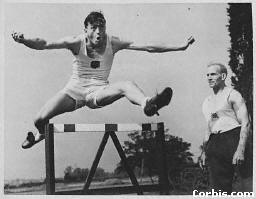"The art of teaching is the art of assisting
discovery."
Goal
Survey online courses and identify teacher-centered and student-centered approaches.
Objectives
- Review existing online courses related to your topic
- Use "Bloom's Taxonomy of the Cognitive Domain" to identify levels of cognition in one teacher-centered and one student-centered online assignment
- Analyze the advantages and drawbacks of each method
Warm-Up Activity
The terms "guide on the side" and "sage on the stage" describe two distinct educational models.
|
Guide on the Side
 |
Sage on the Stage
 |
|
The "guide on the side" describes the student-centered approach where the teacher’s role is like a coach who facilitates the students’ learning. The coach may transfer knowledge to players regarding techniques and strategies, but the players are expected to develop those skills through practice and experience. The same is true for the student-centered courses. |
Evaluation in a teacher-centered course is centered on the student’s ability to remember key concepts often via multiple choice, true/false quizzes and tests. |
Reflect on your experience as a student and remember two outstanding teachers: One "guide on the side" and one "sage on the stage."
Topic 3